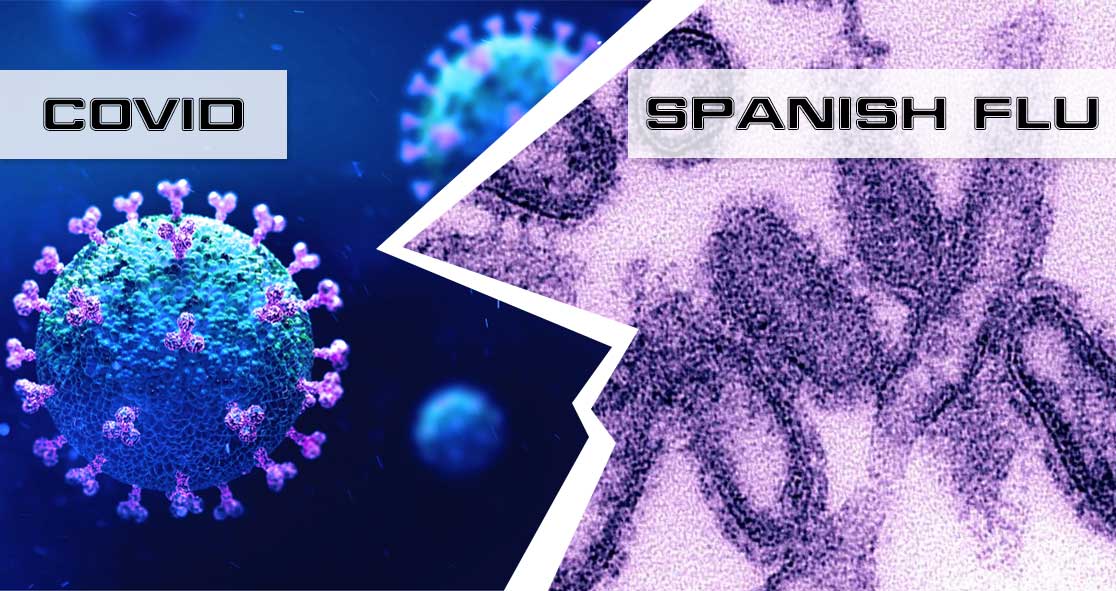COVID-19 has now killed more Americans compared to the 1918-19 Spanish flu pandemic, according to NBC News.
So far, the deadly coronavirus has killed more than 694,000 Americans, while the Spanish flu killed approximately 675,000 at the time.
Dr. Howard Markel, Medical Historian at the University of Michigan, said of the opportunity to vaccinate everyone eligible by now, “Big pockets of American society — and, worse, their leaders — have thrown this away.”
Like the Spanish flu, COVID-19 is unlikely to disappear from our midst. Instead, researchers expect the virus to become a mild seasonal bug.
Prof. Rustom Antia, Biologist at Emory University, Atlanta, Georgia, said, “We hope it will be like getting a cold, but there’s no guarantee,” suggesting an optimistic scenario in which this could happen over a few years.
Currently, the ongoing COVID-19 pandemic has been affecting the United States and other nations of the world.
On average, the US death toll is still running at over 1,900 a day, the highest level since March, while the nation’s overall toll has gone beyond 694,000 as of today.
Experts believe winter may bring a new surge in cases, as the University of Washington’s influential model projecting an additional 100,000 or so Americans will die of COVID-19 by January 1, according to NBC News. This would bring the overall US coronavirus death toll to nearly 776,000.
Globally, the 1918-19 Spanish flu pandemic killed 50 million victims, while the coronavirus took more than 4.6 million lives.
The ongoing COVID-19 pandemic could be tackled by increasing the vaccination rate and finding ways to boost the immune system.
Prof. Antia predicted, “We will all get infected. What’s important is whether the infections are severe.”
Something similar happened with the Spanish flu virus that encountered too many people who were immune. It eventually weakened through mutation, but the virus still circulates, but immunity acquired through natural infection and vaccination has triumphed.
The annual flu shot helps protect people against H1N1 and several other strains of the flu virus. Influenza kills around 12,000 to 61,000 Americans each year, but it is considered a seasonal problem and a treatable one.
Prior to SARS-CoV-2, which causes COVID-19 infection, the Spanish flu was universally considered the worst pandemic disease in human history. However, it is unclear whether the current outbreak ultimately proves deadlier than the Spanish flu.
Globally, it is estimated that 43% of the population has received at least one dose of the COVID-19 vaccine, with some African countries just beginning to give their first shots, per the news outlet.
Dr. Jeremy Brown, Director of Emergency Care Research at the National Institutes of Health, said, “We know that all pandemics come to an end. They can do terrible things while they’re raging.”
He explained that if more and more Americans had gotten vaccinated faster, COVID-19 could have been far less lethal. He said, “We still have an opportunity to turn it around. We often lose sight of how lucky we are to take these things for granted.”
Infectious disease expert Dr. Ann Marie Kimball said one plus point is the coronavirus mutates at a much slower pace than the flu viruses, making it a more stable target for vaccination.
So, will the COVID-19 pandemic become more deadly than the flu pandemic? “You’d like to say no,” Dr. Kimball answered. “We have a lot more infection control, a lot more ability to support people who are sick. We have modern medicine. But we have a lot more people and a lot more mobility. The fear is eventually a new strain gets around a particular vaccine target.”























